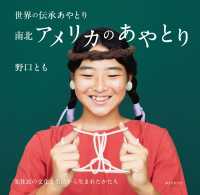Full Description
By 2030, over 30% of the Japanese population will be 65 or older, foreshadowing the demographic changes occurring elsewhere in Asia and around the world. What can we learn from a study of the aging population of Japan and how can these findings inform a path forward for the elderly, their families, and for policy makers?
Based on nearly a decade of research, Aging and Loss examines how the landscape of aging is felt, understood, and embodied by older adults themselves. In detailed portraits, anthropologist Jason Danely delves into the everyday lives of older Japanese adults as they construct narratives through acts of reminiscence, social engagement and ritual practice, and reveals the pervasive cultural aesthetic of loss and of being a burden. Through first-hand accounts of rituals in homes, cemeteries, and religious centers, Danely argues that what he calls the self-in-suspense can lead to the emergence of creative participation in an economy of care. In everyday rituals for the spirits, older adults exercise agency and reinterpret concerns of social abandonment within a meaningful cultural narrative and, by reimagining themselves and their place in the family through these rituals, older adults in Japan challenge popular attitudes about eldercare. Danely's discussion of health and long-term care policy, and community welfare organizations, reveal a complex picture of Japan's aging society.
Contents
AcknowledgmentsIntroduction
Part I: Loss
1 Loss, Abandonment, and Aesthetics
2 The Weight of Loss: Experiencing Aging and Grief
Part II: Mourning
3 Landscapes of Mourning: Constructing Nature and Kinship
4 Temporalities of Loss: Transience and Yielding
5 Passing it on: Circulating Aging Narratives
Part III: Abandonment and Care
6 Aesthetics of Failed Subjectivity
Part IV: Hope
7 Care and Recognition: Encountering the Other World
8 The Heart of Aging: An Afterword
Notes
Bibliography
Index








